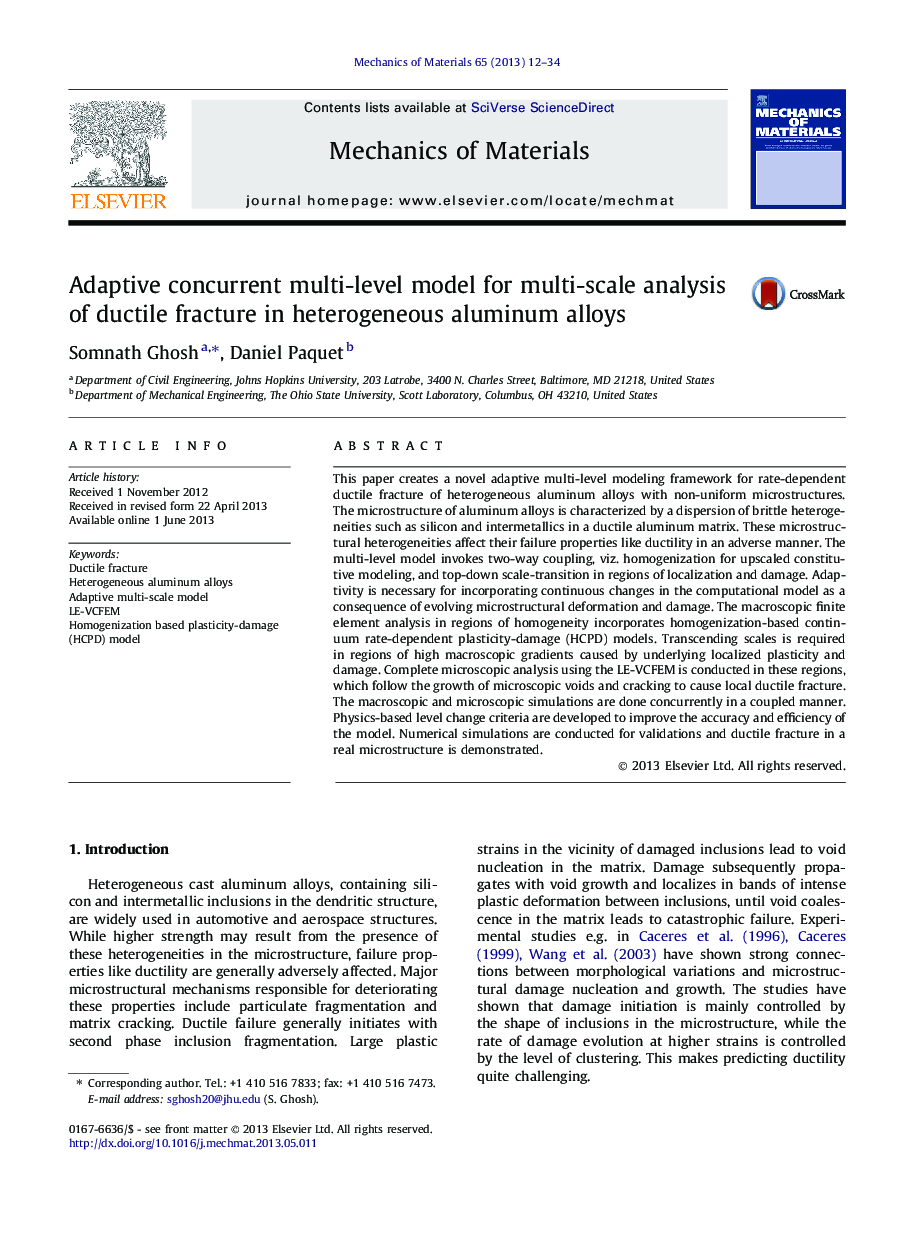| Article ID | Journal | Published Year | Pages | File Type |
|---|---|---|---|---|
| 802828 | Mechanics of Materials | 2013 | 23 Pages |
•Novel adaptive multi-level modeling framework for rate-dependent ductile fracture.•Aluminum alloys with a dispersion of silicon and intermetallics.•Homogenization-based continuum rate-dependent visco-plasticity-damage model.•Top-down microscopic modeling using LE-VCFEM.•Growth of voids and cracking to cause local ductile fracture in real micrographs.
This paper creates a novel adaptive multi-level modeling framework for rate-dependent ductile fracture of heterogeneous aluminum alloys with non-uniform microstructures. The microstructure of aluminum alloys is characterized by a dispersion of brittle heterogeneities such as silicon and intermetallics in a ductile aluminum matrix. These microstructural heterogeneities affect their failure properties like ductility in an adverse manner. The multi-level model invokes two-way coupling, viz. homogenization for upscaled constitutive modeling, and top-down scale-transition in regions of localization and damage. Adaptivity is necessary for incorporating continuous changes in the computational model as a consequence of evolving microstructural deformation and damage. The macroscopic finite element analysis in regions of homogeneity incorporates homogenization-based continuum rate-dependent plasticity-damage (HCPD) models. Transcending scales is required in regions of high macroscopic gradients caused by underlying localized plasticity and damage. Complete microscopic analysis using the LE-VCFEM is conducted in these regions, which follow the growth of microscopic voids and cracking to cause local ductile fracture. The macroscopic and microscopic simulations are done concurrently in a coupled manner. Physics-based level change criteria are developed to improve the accuracy and efficiency of the model. Numerical simulations are conducted for validations and ductile fracture in a real microstructure is demonstrated.
